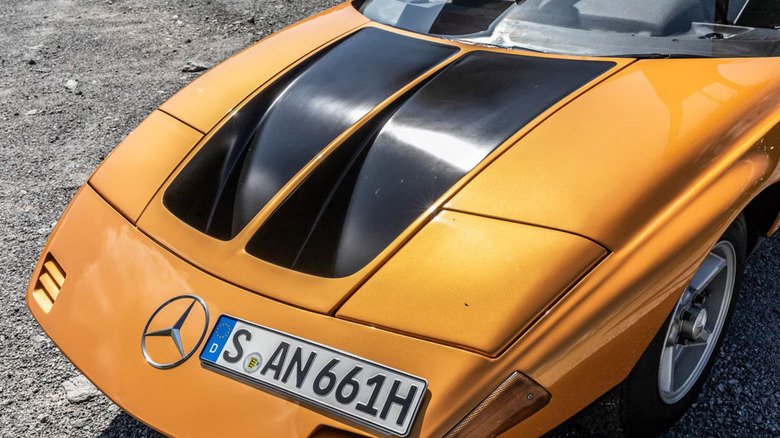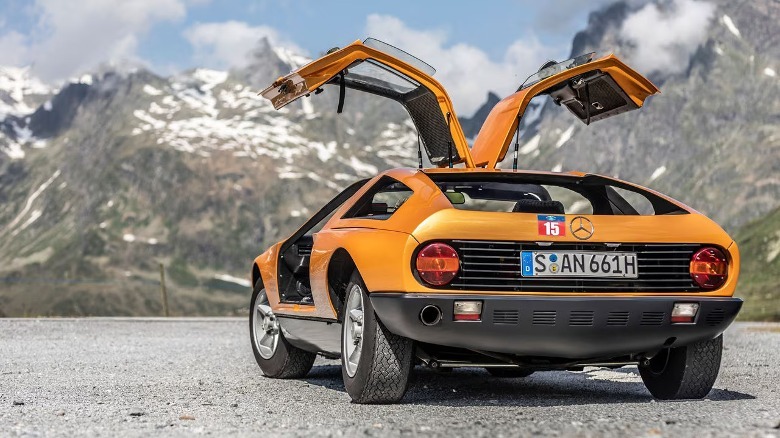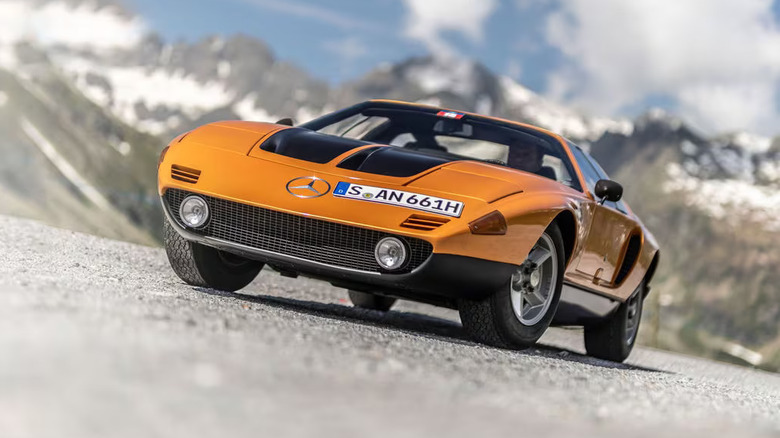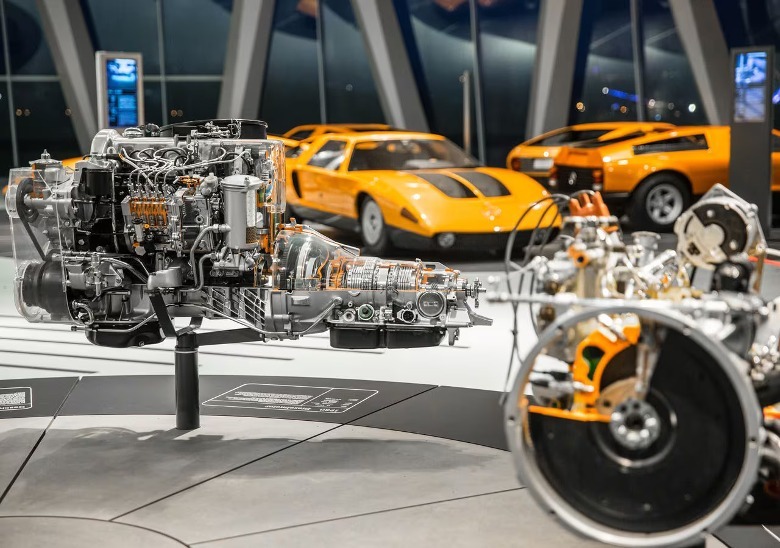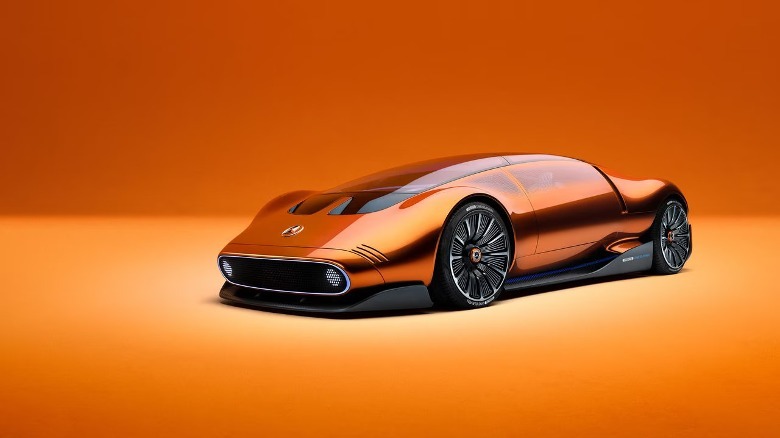Here's What Makes Mercedes-Benz C111 Supercar So Special Under The Hood
The Mercedes-Benz 300 SL is highly regarded for its design and performance. But its predecessor, the Mercedes-Benz C111, had the style and substance to be even more significant than the original gullwing. Designed by Bruno Sacco (the man behind the W124 Mercedes-Benz 500E's timeless vibe), the C111 debuted at the 1969 Frankfurt Auto Show with much aplomb, thanks to its otherworldly, wedge-inspired supercar body.
However, Mercedes-Benz debuted the second-generation C111 concept the following year in Geneva, and it was madness. According to Mercedes-Benz, the Untertürkheim office received "a series of blank [checks]" from deep-pocketed buyers willing to fork over any amount for the elusive Mercedes concept. Back in the day, the Mercedes C111 stood out from other production cars with its exotic, race-ready countenance, but even the 500 or so blank checks weren't enough to greenlight the vehicle for production.
More fascinating is what's under the hood of the Mercedes-Benz C111. It started life with a three-rotor Wankel rotary engine with about 276 horsepower. The second-gen concept appeared in 1970 with a four-rotor rotary engine with 345 horsepower, helping enable a 186 mph (300 kph) top speed.
The Mercedes C111 came with a diesel and V8 engine
Mercedes engineers tried to make the rotary engine as robust and reliable as possible, but it didn't meet the company's standards. Mercedes built 12 examples of the C111 concept car, and 11 had rotary engines.
In 1975, Mercedes created the last C111 with a turbo diesel engine. Equipped with a charge-air cooler and a Garret turbocharger, the 188-horsepower, diesel-powered C111 broke all diesel engine records by recording an average speed of 157 mph (252 kph) at the high-speed Nardo circuit in 1976.
In addition, two examples of the C111 from the first and second generation were "temporarily equipped" with a 3.5-liter M116 V8 engine with about 200 horsepower, the same powerhouse under the hood of a 350 SL, 300 SEL, and Mercedes 280 SE. But in the C111, the engine was paired with a five-speed manual transmission instead of the standard automatic gearbox. In 1978, a V8-equipped, silver-painted Mercedes-Benz C111 broke nine world speed and eleven international class records by averaging 199 mph (320 kph) in a twelve-hour run at Nardo.
Mercedes-Benz unveiled the Vision One-Eleven in June 2023, the C111's much-awaited successor with similar gullwing doors, bright orange paint, and an evolved silhouette. But instead of a rotary, diesel, or V8 engine, the new concept has YASA axial flux electric motors derived from Formula One technology. But like the C111, Mercedes claims the Vision One-Eleven is a rolling hotbed of research and technology. Will it ever make it to production? Mercedes-Benz remains tight-lipped, but 500 blank checks might do the trick this time.
